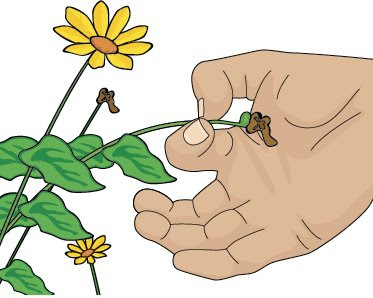Written by Pat Naughton, Master Gardener Volunteer
In the middle of the summer many flowering plants have begun to fade and lose their petals. Removing the spent flowers improves the health and appearance of plants by channeling the plant’s resources away from seed production and into vegetative growth. This process is known as deadheading. Deadheading not only prevents the formation of seeds but stimulates additional flowering. This will often stimulate growth of side shoots in some plants on which additional flowers will form.
Deadheading may seem like a tedious task but the new blooms spawned from this task can make the extra effort well worth it. Some of the more commonly grown garden plants the reward these efforts with a second bloom are:
Bleeding heart
Coneflower
Delphinium
Lupine
Phlox
Sage
Salvia
Shasta daisy
Veronica
Yarrow

The second bloom will also be longer.
Deadheading is very easy to do. As plants fade out of bloom, pinch or cut off the flower stem just above the first set of full, healthy leaves. Repeat with all the dead flowers on the plant.
Besides making plants look their best, there are other benefits of deadheading. Removing faded flowers will help prevent foliage from rotting. Wet petals that fall onto the foliage stick to leaves and can cause rotting that leads to unsightly brown patches. Bulbous perennials such as lilies need a chance to replenish their bulbs in order to produce a good display of flowers next year. By cutting off flowers heads once the petals fall the plant’s energy will be diverted away from seed production towards root production. After flowering, many plants produce an abundance of seeds. If allowed to fall, these can result seedlings you may not want. Snip off seed heads before they ripen and release their contents.
Usually deadheading can be done with finger tips or a scissors. If using a scissors or pruner take precautions to prevent transferring disease-causing pathogens between plants and throughout a plant. Periodically clean the blades while pruning with a sterilizing solution. The traditional mixture for cleaning pruners is water and bleach (4 parts water to 1 part bleach). Another alternative is Lysol® which is less corrosive than bleach. Antibacterial wipes that contain alcohol also provide a convenient way to keep blades clean.
Deadheading is beneficial for the gardener and plants. It’s an opportunity to reconnect with your plants before you stand back and admire the results. It stimulates desired growth for new flowers and roots and prevents unwanted seedlings. Put on a tie-dye shirt, some music, and enjoy deadheading.
